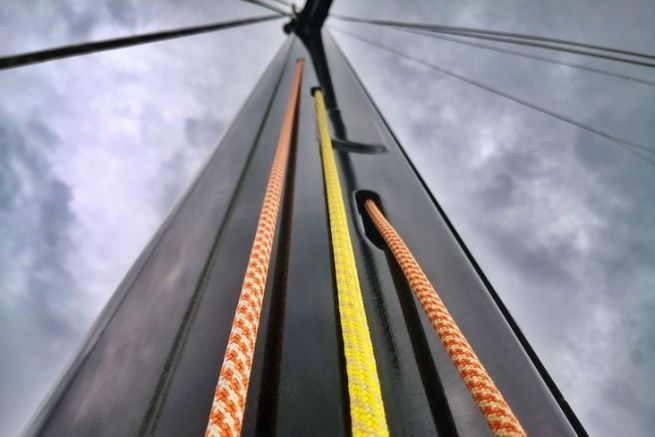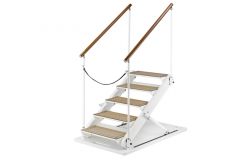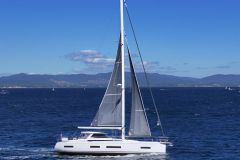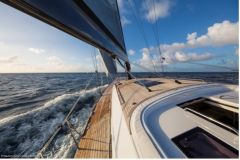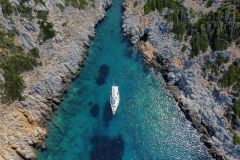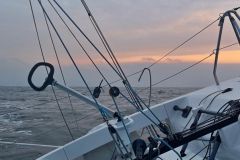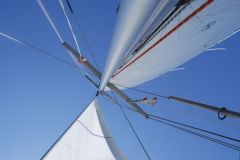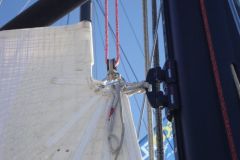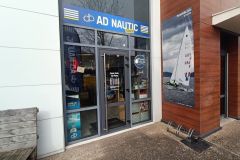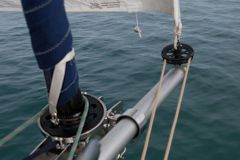With exotic fibres, we enter the realm of superlatives in terms of strength and lightness. Much lighter than steel, with very little elongation, exotic fibres are now well established on pleasure boats, but their cost and technical characteristics reserve them for specific uses.
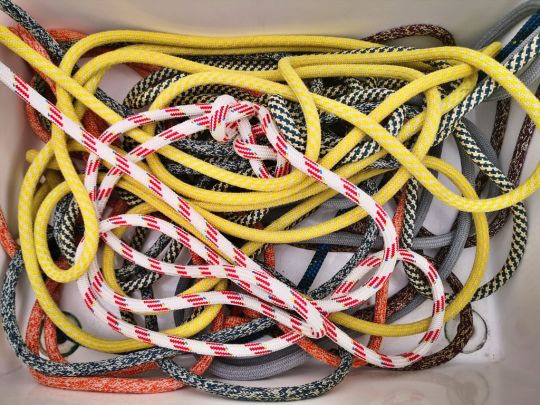
These exotic fibres can be classified into 2 families, each with a sub-category related to technological advances. Trade names are often better known than molecular families. Let's start by discovering the family of high modulus polyethylenes (Dyneema) and then the family of aramids (Kevlar).
High Modulus Polyethylenes (HMPE) : plebiscite for performance.
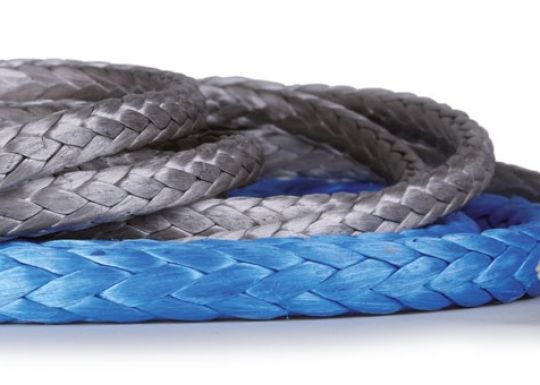
This material is better known as Spectra (in the United States) and Dyneema (in Europe). This fibre first appeared on the American market in the early 1980s.
Its density (0.97) lower than that of water allows it to float. When it burns, a waxy smell emanates from the high modulus polyethylene. This fibre combines very high performance and longevity, in addition it is light, not very sensitive to U.V. rays and is very resistant to knots.
Since the 80's, the performance of high modulus polyethylene fibres has been constantly improving. The SK standard allows you to know which generation of fibre you are dealing with (from SK25 to SK99). The SK78 is now generalized in the manufacture of Spectra and Dyneema ropes, it is a very good price/performance compromise.
In 2013, ultra high modulus polyethylenes (UHMWPE) appeared. Today the stars of courage are the SK99 and the DM 20. The SK99 has an exceptional strength-to-weight ratio, which is very popular in the cores of high-end ropes and the DM 20 has virtually no creep (the irreversible deformation of a material subjected to constant stress), which makes it an ideal rope for rigging.
Advantages : It combines the qualities: light, hydrophobic, not very sensitive to U.V. rays, high resistance, low elongation and as a bonus, it does not lose any characteristics when bending (sheaves and knots). It can be used in simple braid because of its excellent resistance to abrasion and weathering.
Its low coefficient of friction allows it to glide without wearing out.
Disadvantage: Apart from the high price compared to polyester, this fibre has few defects except that before breaking it stretches a little (creep). Due to the low friction, the knots can easily slip until they unravel under load, which is why splicing is often preferred. A Dyneema braid must be sheathed in polyester or aramid to prevent it from slipping in the blockers.
Aramids: expensive, not very durable, but efficient
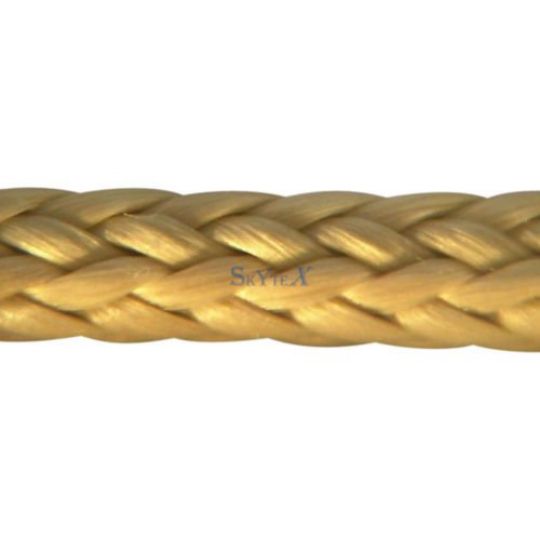
It was in 1964 that Du Pont de Nemours discovered this synthetic fibre, which is now better known under the Kevlar brand name. The aramid has a copper or light brown appearance. In addition to its colour, it is easily distinguishable, because it is impossible to burn it with a flame, its melting point is over 500°.
However, with the technological development of Dyneema or Spectra, this fibre is losing its appeal. Indeed, in addition to its performance in robustness and elongation, it is expensive, sensitive to U.V. rays, and does not tolerate knots well. The exceptional resistance to heating and its coefficient of friction make it a material of choice for the manufacture of sheathing for winches or blockers.
Recently, new technologies have emerged with PBO and Vectran, which are liquid crystal polymers (LCP) from the aramid family.
These newer fibres surpass all existing resistance to elongation and have almost zero creep (irreversible deformation of a material under load).
However, like all the fibres of the aramid family, the resistance to U.V. rays is very limited, they absorb humidity (becoming heavier at the same time) and for PBO even light is harmful. So to make a textile rigging the PBO fibres of the intermediate plastic sheaths protect the fibre from its environment. Although it is very expensive with a limited lifespan, PBO remains an excellent choice for textile rigging of competition yachts.
Advantages : Aramid is a particularly heat-resistant material with very low elasticity and high strength.
Disadvantage: Aramid is very sensitive to U.V. rays and does not support sharp edges or knots.

 /
/ 